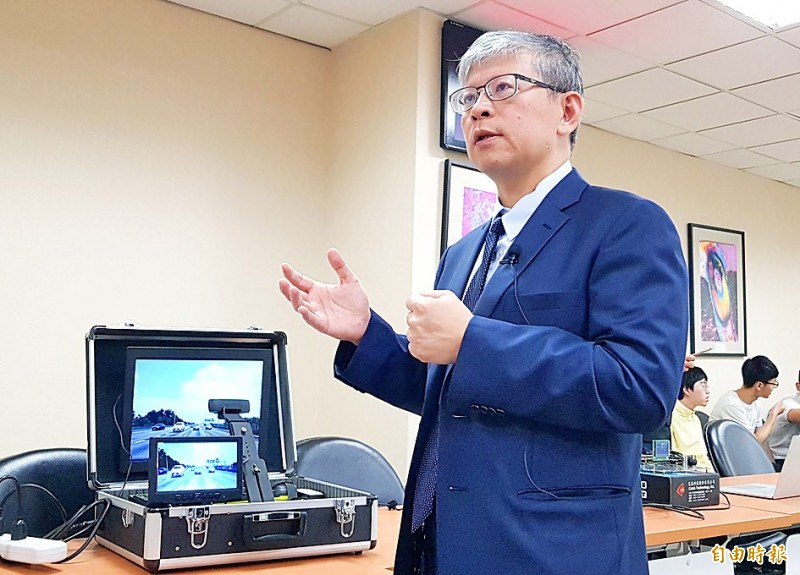《TAIPEI TIMES》 Team unveils AI tool to detect objects on road

Guo Jiun-in, a professor at National Chiao Tung University in Hsinchu and member of its Intelligent Vision System Lab, explains the ezLabel device for autonomous vehicles at the Ministry of Science and Technology in Taipei yesterday. Photo: Chien Hui-ju, Taipei Times
AUTONOMOUS: Researchers have also developed a system that can predict whether a vehicle is about to overtake the vehicle in front, which might be a first
By Lin Chia-nan / Staff reporter
Taiwanese researchers yesterday unveiled a driving assistance tool for use in autonomous vehicles that can detect objects up to 200m.
The tool was developed by a team led by National Chiao Tung University electronics engineering professor Guo Jiun-In (郭峻因).
Guo, who leads the university’s Intelligent Vision System Lab, said that over the past eight years, he moved from developing chips for driving recorders to researching advanced driver assistance systems and artificial intelligence (AI) technology.
As the development of autonomous vehicles gains pace around the world, preventing such vehicles from hitting objects or pedestrians on the road or colliding with other vehicles remains a challenge, Guo said.
To solve the problem, his team developed an AI-assisted tool to detect objects on the road, Guo said, adding that its deep-learning model can identify objects up to 200m in front of the vehicle.
Called “ezLabel,” the tool can operate under inclement weather conditions, such as haze and rain, and is effective during nighttime or in poorly lit environments, he said.
The team’s database has collected 15 million entries and is expected to gather up to 30 million entries this year, he said, adding that it does not collect private information such as vehicle brands.
Information about Taiwan’s traffic conditions interest foreign companies that develop autonomous driving technology, as they lack data on having large numbers of scooters in traffic, which is a niche for Taiwanese developers, he said.
The team is mulling whether to share the tool with the National Center for High-Performance Computing and private firms, such as Amazon.com Inc and Advantech Co, he said.
The team has also developed an object behavior forecasting system to predict whether a vehicle in the rear might overtake the operating vehicle within three seconds, which might be the world’s first system to do so, Guo said.
Of six driving automation levels, the detection tool can reach level 2, meaning that a vehicle is controlled by an automated system under the monitoring of a human driver, while the prediction system can reach level 3, meaning that a vehicle is autonomously operated without needing a human driver’s attention, he said.
Instead of developing costly graphics processing units, the team focuses on embedded AI chips, which can help domestic researchers develop sub-systems for autonomous vehicles, Guo said.
The team’s detection tool and deep-learning models can be applied to uncrewed vehicles operating across land, air and sea, he added.
新聞來源:TAIPEI TIMES




















